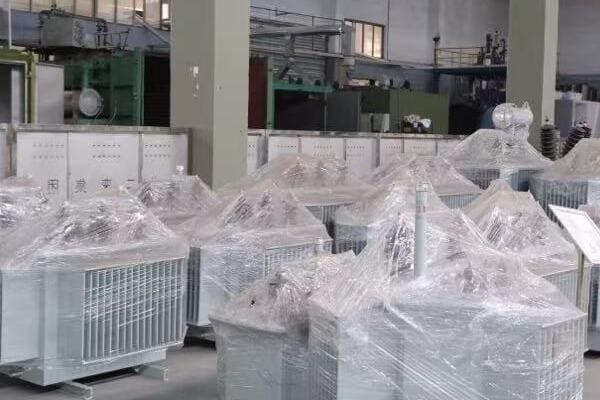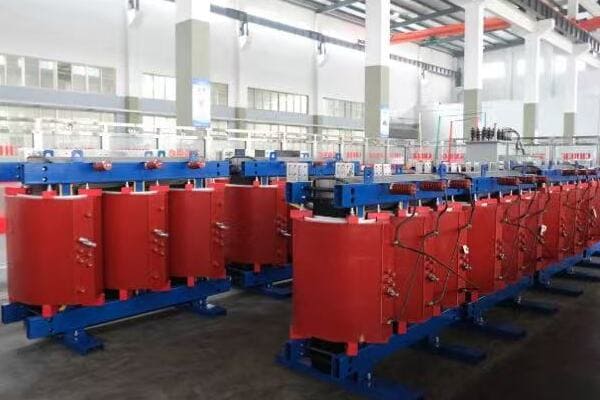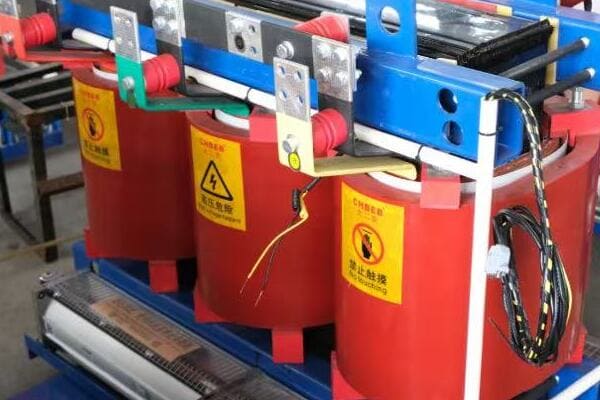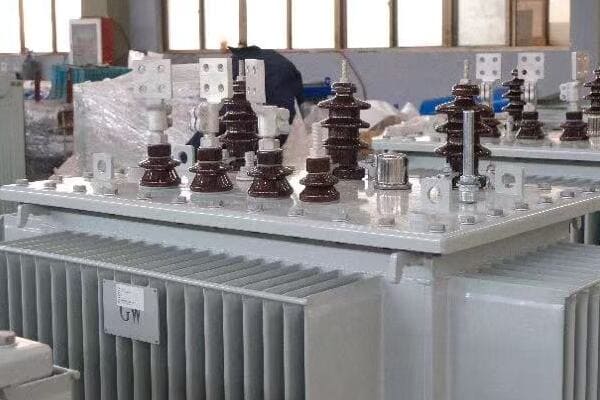What Do Electrical Transformers Do: Understanding the Basics of Power Conversion?
Have you ever wondered how electricity from power plants safely reaches your home? The answer lies in a crucial device: the electrical transformer. Without it, our modern power grid wouldn’t exist.
Electrical transformers are devices that change the voltage of electricity. They work by using electromagnetic induction to transfer energy between two or more circuits. Transformers are essential for efficient power transmission and safe electricity use in our homes and businesses.

As someone who has worked in the power industry for years, I’ve seen firsthand how transformers shape our electrical systems. Let’s dive deeper into the world of electrical transformers and explore their fascinating workings.
The Core Function of Electrical Transformers: Voltage Manipulation Explained?
Imagine trying to drink from a fire hose. That’s what using electricity straight from a power plant would be like. Transformers are the devices that make electricity usable for us.
The core function of electrical transformers is to change voltage levels. They can increase (step up) or decrease (step down) voltage as needed. This ability is crucial for efficient power transmission and safe electricity use.

Let me break down the basics of voltage manipulation in transformers, based on my years of experience in the field.
Why Voltage Manipulation Matters
Voltage manipulation is crucial for our power systems. Here’s why:
- Efficient Transmission: High voltage is needed for long-distance power transmission to reduce losses.
- Safe Usage: Lower voltage is required for safe use in homes and businesses.
- Equipment Compatibility: Different devices need different voltage levels to operate correctly.
How Transformers Manipulate Voltage
Transformers change voltage through a process called electromagnetic induction. Here’s a simple breakdown:
- Primary Coil: This coil receives the input voltage.
- Magnetic Field: The alternating current in the primary coil creates a changing magnetic field.
- Secondary Coil: This coil is exposed to the changing magnetic field, which induces a new voltage.
- Turns Ratio: The ratio of turns in the primary and secondary coils determines the voltage change.
Types of Voltage Manipulation
Transformers can manipulate voltage in two main ways:
| Type | Function | Application |
|---|---|---|
| Step-Up | Increases voltage | Power plants to transmission lines |
| Step-Down | Decreases voltage | Substations to homes |
Real-World Examples
In my work, I’ve seen transformers used in various settings:
- Power Plants: Step-up transformers increase voltage for long-distance transmission.
- Substations: Step-down transformers decrease voltage for local distribution.
- Pole-mounted Transformers: These further step down voltage for residential use.
- Electronic Devices: Small transformers in chargers convert household voltage to device-appropriate levels.
Understanding voltage manipulation is key to grasping the role of transformers in our power systems. It’s this ability that allows us to have a flexible and efficient electrical grid, capable of delivering power from distant plants to our homes safely and efficiently.
From High to Low and Vice Versa: How Transformers Convert Power?
Have you ever wondered how the massive amount of power generated at a plant becomes the safe, usable electricity in your home? The secret lies in the transformer’s ability to convert power from high to low voltage and vice versa.
Transformers convert power by changing voltage levels while maintaining the same frequency. They use electromagnetic induction to step voltage up for efficient long-distance transmission or step it down for safe local use, all while preserving the overall power.

Let me explain how this power conversion process works, drawing from my experience in the field.
The Basics of Power Conversion in Transformers
Power conversion in transformers is based on a simple principle: the conservation of energy. Here’s how it works:
- Input Power: Power enters the transformer at one voltage level.
- Electromagnetic Conversion: The transformer changes the voltage.
- Output Power: Power exits at a new voltage level, but the total power remains the same (minus small losses).
The Power Equation
The key to understanding power conversion is the power equation:
Power = Voltage * Current
This equation shows that power can remain constant even if voltage and current change, as long as they change in inverse proportion.
Step-Up vs. Step-Down Conversion
Transformers can convert power in two directions:
| Type | Voltage Change | Current Change | Application |
|---|---|---|---|
| Step-Up | Increases | Decreases | Power plants to transmission lines |
| Step-Down | Decreases | Increases | Substations to homes |
Real-World Power Conversion Example
Let’s look at a simplified example from my work:
- Power Plant Output: 100 MW at 20,000 V
- Step-Up Transformer: Increases voltage to 400,000 V for transmission
- Power After Step-Up: Still 100 MW, but now at 400,000 V with lower current
- Substation Step-Down: Decreases voltage to 10,000 V for local distribution
- Final Step-Down: Reduces voltage to 240 V for home use
Throughout this process, the power remains constant (minus small losses), but the voltage and current change dramatically.
Efficiency in Power Conversion
Transformers are highly efficient at converting power. Modern large transformers can achieve efficiencies over 99%. However, no transformer is 100% efficient due to factors like:
- Core Losses: Energy lost in the iron core due to changing magnetic fields.
- Copper Losses: Energy lost as heat in the copper windings.
In my work designing power systems, minimizing these losses is a constant challenge and area of innovation.
The Importance of Power Factor
Power factor is a crucial concept in power conversion. It’s the ratio of real power to apparent power. A perfect power factor of 1 means all power is being used effectively. Transformers can help improve power factor in some cases, enhancing overall system efficiency.
Understanding how transformers convert power is crucial for anyone working in or interested in electrical systems. It’s this ability to efficiently change voltage levels while preserving power that makes our modern electrical grid possible. From the massive transformers at power plants to the small ones in our electronic devices, this principle of power conversion is at work all around us.
The Science Behind Transformers: Electromagnetic Induction in Action?
Have you ever been curious about the magic behind transformers? How can they change voltage levels so efficiently? The answer lies in a fascinating principle: electromagnetic induction.
Electromagnetic induction is the process by which a changing magnetic field creates an electric current in a nearby conductor. This principle is the foundation of how transformers work, allowing them to transfer energy between circuits and change voltage levels.

Let me explain this fascinating principle and how it applies to transformers, based on my experience in the field.
The Discovery of Electromagnetic Induction
Michael Faraday discovered electromagnetic induction in 1831. This discovery changed the world of electricity forever. Here’s how it works:
- A changing magnetic field creates an electric field.
- This electric field can create a current in a nearby conductor.
How Electromagnetic Induction Works in Transformers
In a transformer, we use electromagnetic induction to transfer energy between two coils. Here’s the process:
- Primary Coil: We apply an alternating current to this coil.
- Changing Magnetic Field: The alternating current creates a changing magnetic field.
- Iron Core: This concentrates and directs the magnetic field.
- Secondary Coil: The changing magnetic field induces a voltage in this coil.
The Transformer Equation
The relationship between the primary and secondary coils is described by the transformer equation:
Vs / Vp = Ns / Np
Where:
- Vs = Secondary Voltage
- Vp = Primary Voltage
- Ns = Number of turns in Secondary Coil
- Np = Number of turns in Primary Coil
This equation shows that the ratio of voltages is equal to the ratio of turns in the coils.
Practical Applications of Electromagnetic Induction in Transformers
| Application | How It Uses Induction | Example |
|---|---|---|
| Step-Up Transformer | More turns in secondary coil | Power plant to transmission lines |
| Step-Down Transformer | Fewer turns in secondary coil | Substation to homes |
| Isolation Transformer | Equal turns, separate coils | Safety in medical equipment |
Efficiency and Power Conservation
One of the great things about transformers is their high efficiency. In an ideal transformer:
Power In = Power Out
Or: Vp Ip = Vs Is
Where Ip and Is are the primary and secondary currents.
In reality, transformers aren’t 100% efficient due to factors like core losses and copper losses. But modern large transformers can achieve efficiencies over 99%.
The Role of the Iron Core
The iron core in a transformer plays a crucial role in electromagnetic induction:
- It concentrates the magnetic field, making the transformer more efficient.
- It provides a low reluctance path for the magnetic field, enhancing the coupling between coils.
- It’s typically made of laminated sheets to reduce eddy current losses.
In my work, I’ve seen how understanding these principles is crucial for designing efficient power systems. It’s amazing how this simple principle, discovered almost two centuries ago, still forms the basis of our modern electrical grid.
Transformers in Our Daily Lives: From Home Appliances to Power Grids?
Have you ever stopped to think about how many transformers you encounter in a day? From the moment you wake up to when you go to sleep, transformers are working behind the scenes to power your life.
Transformers are ubiquitous in our daily lives. They’re in our home appliances, electronic devices, and the power grid that supplies our electricity. Transformers ensure that each device receives the correct voltage, from your smartphone charger to the massive substations powering your city.

Let me take you on a tour of the transformers in our daily lives, based on my years of experience in the power industry.
Transformers in Home Appliances
Many of our home appliances use transformers:
- Microwave Ovens: These contain a large transformer to step up the voltage for the magnetron.
- Doorbells: Transformers reduce the 120V house current to the low voltage needed for doorbells.
- HVAC Systems: Transformers are used in the control circuits of heating and cooling systems.
Transformers in Electronic Devices
Our electronic devices rely heavily on transformers:
- Smartphone Chargers: These small adapters contain miniature transformers.
- Laptop Power Supplies: The "brick" in your laptop charger contains a transformer.
- Television Sets: Transformers are used in the power supply and for isolating the set from the mains.
Transformers in Lighting
Transformers play a crucial role in many lighting systems:
- Low-Voltage Lighting: Outdoor lighting systems often use transformers for safety and efficiency.
- LED Drivers: Many LED lighting systems use transformers to provide the correct voltage.
Transformers in the Power Grid
The power grid is full of transformers:
- Step-Up Transformers: At power plants, increasing voltage for long-distance transmission.
- Substation Transformers: Stepping down voltage for local distribution.
- Pole-Mounted Transformers: Further reducing voltage for residential use.
Comparison of Transformer Applications
| Application | Input Voltage | Output Voltage | Purpose |
|---|---|---|---|
| Smartphone Charger | 120V AC | 5V DC | Safe charging |
| Doorbell | 120V AC | 16V AC | Safe operation |
| Power Plant | 20kV | 400kV | Efficient transmission |
| Substation | 400kV | 10kV | Local distribution |
The Impact of Transformers on Our Lives
In my work, I’ve seen how transformers impact our lives in many ways:
- Safety: Transformers allow us to use high-voltage electricity safely in our homes.
- Efficiency: They enable efficient power transmission, keeping electricity costs down.
- Convenience: Transformers make it possible for us to have a wide range of electronic devices.
- Reliability: They play a crucial role in maintaining a stable and reliable power supply.
Understanding the role of transformers in our daily lives gives us a new appreciation for these often-overlooked devices. From the tiny transformers in our phone chargers to the massive ones in power substations, these devices are working tirelessly to power our modern world.
The Role of Transformers in Modern Energy Systems: Efficiency and Sustainability?
As we move towards a more sustainable future, the role of transformers in our energy systems is evolving. How are these devices adapting to meet the challenges of renewable energy and smart grids?
Transformers play a crucial role in modern energy systems by enabling efficient power transmission and distribution. They’re adapting to integrate renewable energy sources, support smart grids, and improve overall system efficiency, contributing significantly to sustainability efforts in the energy sector.

Let me share some insights from my experience about how transformers are shaping our modern energy systems.
Transformers and Renewable Energy Integration
Renewable energy sources present new challenges for transformers:
- Variable Output: Solar and wind power output fluctuates, requiring transformers to handle variable loads.
- Distributed Generation: Small-scale renewable sources need transformers for grid connection.
- Bidirectional Power Flow: With home solar panels, power can now flow both to and from homes.
Smart Transformers for Smart Grids
Smart transformers are emerging as key components of smart grids:
- Real-Time Monitoring: They can provide data on power quality and usage.
- Voltage Regulation: Smart transformers can adjust voltage levels in real-time.
- Fault Detection: They can quickly identify and isolate faults in the grid.
Efficiency Improvements in Modern Transformers
Improving transformer efficiency is crucial for sustainability:
- Low-Loss Materials: Advanced magnetic materials can significantly reduce transformer losses.
- Optimized Design: Computer modeling allows for more efficient transformer designs.
- Cooling Innovations: New cooling methods can improve efficiency and extend transformer life.
Transformers in Energy Storage Systems
Energy storage is becoming crucial for grid stability:
- Battery Systems: Transformers are needed to integrate large-scale battery storage with the grid.
- Pumped Hydro: Transformers play a role in both energy storage and retrieval in these systems.
Comparison of Traditional and Modern Transformer Applications
| Application | Traditional Role | Modern Role |
|---|---|---|
| Power Generation | Step-up for transmission | Integrate variable renewable sources |
| Distribution | Step-down for local use | Enable bidirectional power flow |
| Grid Management | Passive voltage conversion | Active role in grid stability and efficiency |
| Energy Storage | Limited role | Crucial for integrating storage systems |
The Future of Transformers in Energy Systems
In my work, I’m seeing exciting developments in transformer technology:
- Solid-State Transformers: These could revolutionize power distribution with their ability to handle DC and AC.
- High-Temperature Superconducting Transformers: These promise near-zero resistance and very low losses.
- Nanomaterial Cores: Advanced materials could dramatically improve transformer efficiency.
The Impact on Sustainability
Transformers are contributing to sustainability in several ways:
- Enabling Renewable Energy: By helping integrate renewable sources into the grid.
- Improving Efficiency: Reducing energy losses in transmission and distribution.
- Supporting Electric Vehicles: Playing a crucial role in EV charging infrastructure.
- Enhancing Grid Resilience: Helping the grid adapt to changing energy patterns.
Understanding the role of transformers in modern energy systems is crucial for anyone interested in sustainability and energy efficiency. These devices, often overlooked, are at the forefront of our transition to a more sustainable energy future.
Conclusion
Electric transformers are the backbone of our power systems. They enable efficient power transmission, safe distribution, and countless applications in our daily lives. From the massive transformers at power plants to the small ones in our electronic devices, these amazing machines keep our world running.
Free CHBEB Transformer Catalog Download
Get the full range of CHBEB transformers in one catalog.
Includes oil-immersed, dry-type, pad-mounted, and custom solutions.
Quick Message
Request A free quote
We'd like to work with you
- +86 15558785111
- [email protected]
- +86 15558785111
What We Do
CHINA BEI ER BIAN (CHBEB) GROUP, with 218 million in registered capital, originated from Beijing Beierbian Transformer Group. Headquartered in Beijing for R&D, it operates major production bases in Nanjing and Yueqing, producing high-quality products.
Latest Product
address
BeiJing
No 3,RongJing East Road,BeiJing Economic Technological Development Area,BeiJing,China
JiangSu
No 7️Xiangfeng Road,Jiangning,NanJing,JiangSu,China
WenZhou
No.211, Wei 16 Road, Industrial Zone, Yueqing, Wenzhou, Zhejiang, China.
XiangYang Industrial Zone ,YueQing,WenZhou,ZheJiang,China
contact us
- [email protected]
- +86 13057780111
- +86 13057780111
- +86 15558785111
Copyright © Bei Er Bian Group


